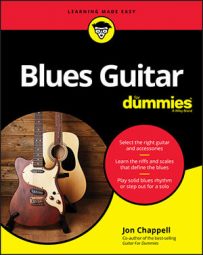Playing the guitar can be a sweaty, muscular, gritty activity — if you're doing it correctly, that is. And while your guitar can handle pretty much any abuse you deliver (within reason), your strings aren't so hardy. Through repeated contact with hands and fingers, guitar strings lose their tone and won't play in tune; they also wear out and eventually may break. Because of the repetitive use, you eventually have to change them, so do it regularly. Just like changing the oil in your car, it's almost impossible to overdo it.
Knowing when to change your guitar strings
You may need to change your guitar's strings in many different situations:
- A string breaks, providing a jolting reminder that all the strings may need changing.
- The strings sound dull and lifeless; they may even look dull.
- The strings no longer play in tune, exhibiting evidence that they've lost their flexibility.
If you break a string while playing, you need to replace at least one of the strings (the broken one, naturally) immediately. But you should also change all your strings (the entire set of six) every two to three months to keep the strings fresh — that is, in tune and able to produce a bright, lively tone.
No matter how gentle you are on the strings, the tone of your guitar isn't what it used to be after several months of constant playing, biochemical assaults from your fingers, and environmental changes. One sure-fire way to determine whether you need to change the strings? If you can't remember the last time you changed them, then it's definitely time!
Choosing the right guitar strings
Chances are, when you bought your guitar, it had the right type of strings attached. So hopefully, if you bought an electric guitar, it came with strings designed for an electric guitar in the appropriate gauge. But, just so you know what you're looking for when you want to replace your current strings (or if you want to experiment with different types of strings), consider the following list when making your string-changing decisions:
- The gauge of a string is its thickness and determines how easy the string is to fret and bend.
- Fretting involves pushing the string down onto the fretboard with your fingers.
- Bending is the act of pushing or pulling the strings sideways across the fretboard, which raises the pitch of the note.
- The fretboard is the top of the neck of the guitar — the part where the frets protrude and where your fingers press the strings when fretting.
Higher-numbered gauges (or heavier gauges, as guitarists call them) are stiffer and provide more resistance, but they also hold their tuning and tone better and wear out less quickly than lighter-gauge strings.
Striking a balance among playing comfort, string performance, and longevity is important. Here are a few tidbits to keep in mind when you're choosing your strings:
- Blues guitarists like their guitars set up with strings that fight back. This give and take allows the guitarist to really dig into the strings.
- Rock guitars, on the other hand, may use lighter-gauge strings because the light ones facilitate super-fast playing and extreme string bending.
- The more experienced you are as a player, the better you are at managing heavier gauges. But that doesn't mean you necessarily prefer them.
- Many guitarists go strictly for playability and comfort and put ultra-light-gauge strings on their guitars and then just get used to changing out the strings a lot.
In the end, the choice of string gauge is completely up to the player's individual preference.

